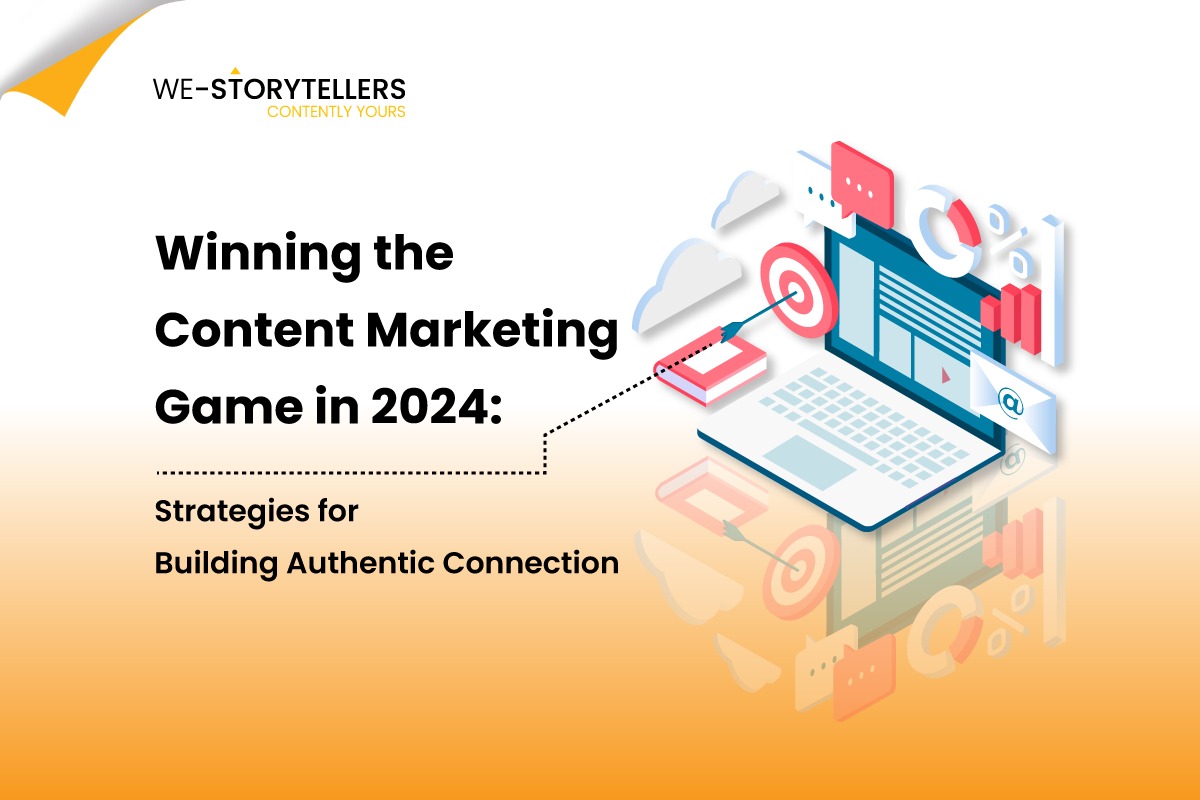AI has transformed the marketing world, making teams more efficient and improving how campaigns are run. While the benefits are clear, the flood of AI-generated content is leading to an overwhelming amount of similar, automated content. Google’s March 2024 algorithm update is cracking down on AI-driven content, favoring unique and genuinely helpful posts to ensure that human creativity and value stand out in the crowded digital space.
That said, let’s delve deeper to understand the top 5 content marketing challenges and how businesses can navigate these challenges effectively amidst the growing wave of AI-generated content. Read on!
Top 5 Content Marketing Challenges and Strategies to Overcome Them
1. Creating the right content
According to the Content Marketing Institute, “57% of the marketers say creating the right content for their audience is a challenge.” As the internet gets noisier and AI makes it incredibly easy to create listicles and content that copy each other, there is a need for companies to stand out.
Solution:
Businesses should focus on understanding:
- Their intent and purpose
- Audience’s needs and interests
- What differentiates them from other competitors
2. Identifying buyer personas
Publishing content on the right channels can be challenging, considering the number of different marketing channels through which companies can share their content. As each medium has its unique target audience, they all include different buyer personas, and finding the right medium that includes target customers to generate leads is not easy.
Solution:
Businesses must analyze their target audience in-depth on various social media platforms including Facebook, Instagram, LinkedIn and Twitter before they curate content for high engagement and brand connect.
3. Publishing content consistently
A recent survey indicates that publishing content 2 to 6 times per week can lead to a 50% increase in clicks and improved rankings on search engines. To maximize these benefits, it’s essential to focus on both short-form content for social media and long-form content for your website. This balanced approach helps cater to different audience preferences and boosts overall engagement.
Solution:
To achieve consistent publishing, develop a well-structured content calendar that outlines topics, formats, and publishing schedules. This allows you to maintain a steady flow of content across multiple channels. Additionally, repurposing content across various platforms and formats can also increase reach and engagement while minimizing the effort needed to produce entirely new content for each platform.
4. Enhancing user experience
Readers use the Internet to be educated on a topic, get help from a service, or make a purchase. While doing so, content readability and connection plays a very crucial role. Elements such as content with small font or text that does not highlight the brand story, or the important aspects of the product/service can lead to a negative experience.
Solution:
In content marketing, readers are the top priority. Without an audience to engage with your content, all efforts would be in vain. Therefore, adopting a customer-centric approach and prioritizing the audience’s experience is essential to a successful content marketing strategy. To ensure readers derive maximum value from your content:
- Highlight your brand story: Clearly articulate what your brand is about, why it exists, and how it operates.
- Develop content that reflects your brand values: Create material that aligns with and communicates your brand’s core principles.
- Use engaging content formats: Use formats like short video clips, infographics, and GIFs to capture and retain audience interest.
5. Evaluating ROI
Companies often adjust their marketing strategies and budget allocations based on insights gained from content ROI analysis. Key performance indicators (KPIs) in content marketing, such as website traffic, click-through rates (CTR), and unique video views, provide valuable data to assess the effectiveness of content efforts.
Solution:
To accurately measure ROI, it is essential to identify the KPIs that align most closely with the company’s specific goals and objectives. For instance, if the goal is to increase brand awareness, metrics like social media engagement and website traffic might be more relevant. Alternatively, if the focus is on driving conversions, KPIs such as lead generation rates or sales conversions would be more suitable.
By selecting the right KPIs, companies can evaluate the impact of their content marketing efforts and make informed decisions.
Ensuring Authenticity While Adapting to AI
As we delve into the content marketing challenges of 2024, it’s evident that adapting to the evolving digital landscape is crucial. The rise of AI has transformed content creation and distribution, bringing both opportunities and challenges. Companies must focus on creating unique, audience-centric content to stand out amidst the noise and navigate the potential pitfalls of AI-generated content.


